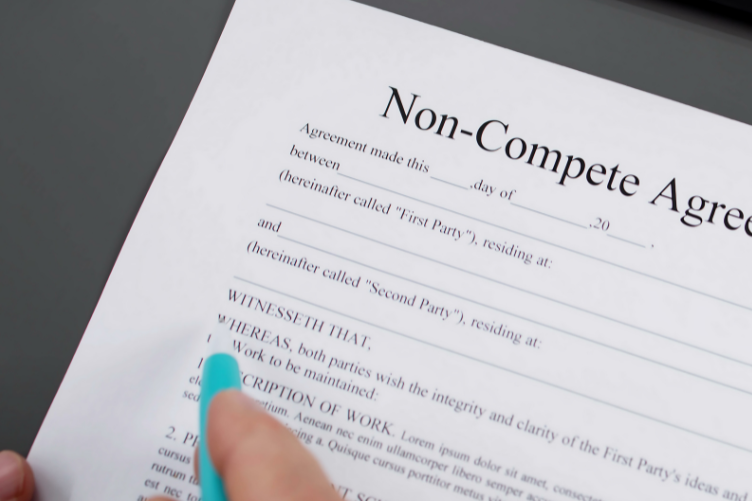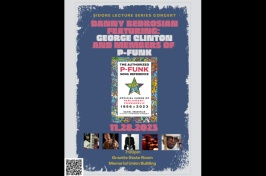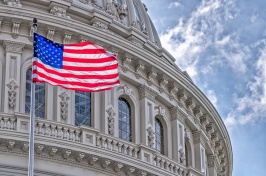
As policymakers debate the future of non-compete agreements, a study from the University of New Hampshire is contributing to the conversation by showing that stricter enforcement can reduce the economic value of innovation, even when companies invest heavily in research and development.
Zhaozhao He, associate professor of finance at UNH’s Peter T. Paul College of Business and Economics, found that non-compete agreements reduce workers’ bargaining power, limit job mobility, and suppress wages. They also restrict the exchange of ideas between firms, which is essential for breakthrough discoveries and long-term economic growth.
He's research was published earlier this year in the Journal of Corporate Finance, and was cited in the Federal Trade Commission’s (FTC) 2024 final rule banning most non-compete clauses across the U.S., which was blocked following a federal court ruling.
"I think it’s important to address this because the answer has significant implications for policymakers, businesses, and workers,” He says. “The original intention of non-competes is to protect proprietary information and encourage innovation. But if these contracts discourage workers from pursuing innovative efforts, they can backfire, ultimately contradicting their original purpose."

Companies often use non-compete agreements to protect intellectual property and investments. Nearly 30 million U.S. workers are bound by non-compete agreements, preventing them from joining or starting a competing firm for a set period, typically one to two years.
"On one hand, these contracts can benefit firms by protecting intellectual property, which should encourage more investment and innovations,” He says. “But on the other hand, they're often bad for workers. Once you sign a non-compete, you have fewer outside options. Even if you improve and gain new skills, you can’t fully explore or capitalize on them. That can reduce a worker's incentive to work harder or be more innovative."
To understand how non-compete agreements affect innovation, He studied patent data from nearly 2,700 publicly traded U.S. companies between 1992 and 2009 — when several states changed how strictly they enforced non-competes. These changes created an opportunity to compare what happened before and after the laws changed.
By looking at the value of patents filed during those times and across different states, He was able to pinpoint the impact of non-competes on innovation. The study measured patent value based on how investors reacted when those patents were approved.
Key findings include:
- Patents produced under stricter non-compete laws were less valuable; their market value, measured as a share of firm assets, dropped by 32.5%, compared with the value of patents in states without experiencing any changes in enforcement. In contrast, when states loosened enforcement, that value rose by 38.8%, suggesting that greater worker mobility leads to more economically significant innovations.
- Despite increasing R&D spending, firms in stricter states saw lower returns on innovation. Companies were investing more but getting less value in return.
- The impact was most pronounced among early-career inventors and those with highly specialized skills, who saw steeper drops in the value of their innovations under stricter non-compete enforcement.
- Firms in stricter states also experienced reduced hiring and lower turnover among inventors, limiting the flow of talent and ideas across organizations.
“With strong intellectual property protection, the theory is that firms have a greater incentive to invest in R&D and develop more innovations because they feel secure. But I found that the value of those innovations drops,” He says. “Workers have less incentive to invest in themselves or pursue innovation. I think firms may be overlooking the importance of employee motivation and incentives in the innovation process, but that’s a critical element in creating valuable innovations."
The FTC has long been critical of non-compete agreements for their potential to suppress wages and limit worker freedom, and cited He’s research in its April 2024 final rule banning most non-compete clauses across the U.S.
“Three highly reliable empirical studies find that non-competes reduce innovation,” the FTC rule states. “One such study, a study by Zhaozhao He, finds that the value of patents, relative to the assets of the firm, increases by about 31% when non-compete enforceability decreases. In contrast to some other studies of innovation ... He's study focuses on the value of patents, rather than the mere number of patents.”
He received an email from the FTC in April 2024 informing her that the research was used in the final rule.
“I'm happy that my research findings had some real meaning to the policymaking,” He says.
The future of the ban is uncertain due to ongoing legal challenges. He believes there could be a middle ground where both employers and employees can walk away feeling protected.
"Companies have many ways to protect their intellectual property — through patents, trade secrets, trademarks, or by having employees sign non-disclosure agreements. All of these are tools focused on safeguarding the knowledge itself,” He says. “I think firms should consider relying more on these types of protections rather than targeting the people ... if you focus on protecting the proprietary information directly, it doesn’t interfere with human capital or employee incentives.”
He hopes her research encourages companies to reconsider non-competes by recognizing that protecting intellectual property doesn't have to come at the cost of employee motivation.
-
Written By:
Aaron Sanborn | UNH Paul College & CHHS | aaron.sanborn@unh.edu

















































